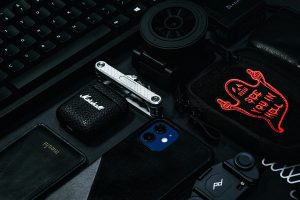Wearables for Tracking Blood Glucose Without Needles
Living with diabetes can be a constant struggle, as individuals are constantly monitoring their blood glucose levels to maintain their health. This means pricking their fingers multiple times a day to get a drop of blood for testing. However, thanks to advancements in technology, there is a new way to track blood glucose levels without the need for needles – wearables. These small, portable devices are changing the way individuals with diabetes manage their condition. In this article, we will explore the world of wearables for tracking blood glucose without needles and how they are revolutionizing diabetes management.
The Traditional Way of Tracking Blood Glucose Levels
For individuals with diabetes, tracking blood glucose levels is crucial for maintaining good health. Traditionally, this has been done through the use of a blood glucose meter and test strips. This involves pricking a finger with a lancet, squeezing a drop of blood onto a test strip, and then inserting the strip into the meter for a reading. This process is not only time-consuming, but it can also be painful and inconvenient, especially for those who have a fear of needles.
The Rise of Wearables for Blood Glucose Tracking
Wearables for tracking blood glucose levels have been gaining popularity in recent years, and for good reason. These devices are designed to be worn on the body and provide a continuous reading of blood glucose levels. This means no more finger pricking and no more hassle. There are a few different types of wearables for blood glucose tracking, each with their own unique features and benefits.
Continuous Glucose Monitoring (CGM) Systems
CGM systems consist of a small sensor that is inserted under the skin, usually on the abdomen or arm. This sensor continuously measures glucose levels in the interstitial fluid and sends the data to a receiver or smartphone. Some CGM systems also come with alarms that can alert the wearer when their levels are too high or too low, making it easier to manage insulin dosage and food intake.
Non-Invasive Glucose Monitoring (NGM) Devices
NGM devices use different methods to measure blood glucose levels without the need for needles. Some devices use infrared light to detect glucose levels through the skin, while others use a small electrical current. These devices are still in the early stages of development and may not be as accurate as CGM systems. However, they offer a pain-free alternative to traditional methods of blood glucose monitoring.
Smartwatches and Fitness Trackers
Many smartwatches and fitness trackers now come equipped with sensors that can measure blood glucose levels. These devices use advanced technology, such as optical sensors, to detect glucose levels through the skin. While these devices may not be as accurate as CGM systems or NGM devices, they are convenient and discreet, making them a popular choice for individuals with diabetes.
The Benefits of Wearables for Blood Glucose Tracking
Wearables for tracking blood glucose levels offer many benefits, including:
Pain-free Monitoring:
As mentioned earlier, one of the main benefits of wearables is that they eliminate the need for finger pricking, making blood glucose monitoring pain-free and less intrusive.
Continuous Tracking:
CGM systems and NGM devices provide continuous readings, allowing individuals to get a better understanding of their glucose levels throughout the day. This makes it easier to manage insulin dosage and make necessary lifestyle changes.
Convenience:
Wearables are portable and easy to use, making it easier for individuals to monitor their glucose levels on the go. They also provide real-time data, meaning individuals can quickly identify and address any potential issues.
Data Sharing Abilities:
Many wearables come with the option to share data with healthcare providers, allowing for more personalized and effective diabetes management. This also eliminates the need for manual logbooks and the potential for human error.
In Conclusion
Wearables for tracking blood glucose levels without needles are changing the game for individuals with diabetes. These devices offer a pain-free and convenient way to monitor blood glucose levels and provide continuous data that can help improve overall diabetes management. While they may not replace traditional monitoring methods completely, they offer a valuable alternative for those looking for a more comfortable and hassle-free way to manage their diabetes.











